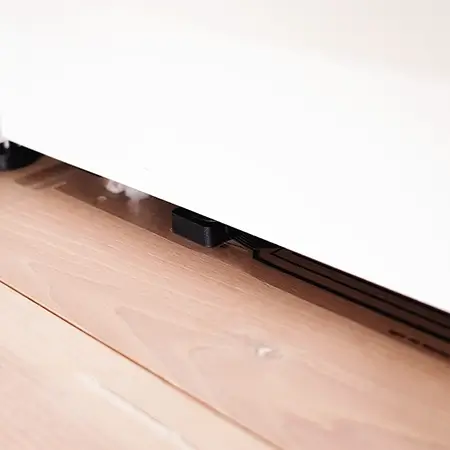Use Case: Dishwasher Leaks
How much does it really cost to fix a dishwasher leak?
It’s probably more than you think. Learn about how leaks like these cause damage, escalate costs, and how a tiny sensor can save you all that money and stress.
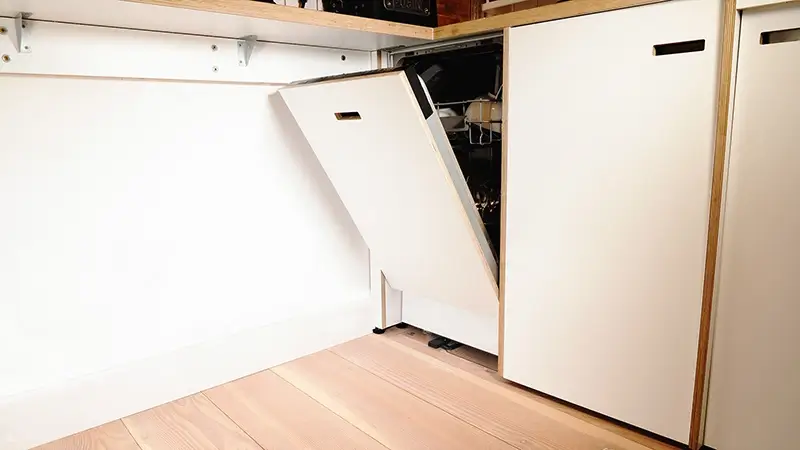
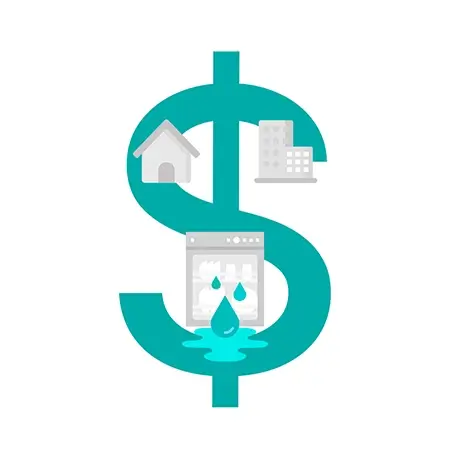
Water damage is one of the largest sources of repair costs
Water damage to homes and businesses represents a massive cost to property owners, tenants and insurers every year.
It is the third-largest cause of property damage and subsequent insurance claims in the US. According to the Environmental Protection Agency, water leaks in the US waste more than 1T gallons yearly, and cost insurers more than US$6.8M a day.
In the UK, insurers are estimated to pay an average of £1.8M a day in claims related to water leaks and burst pipes.
Dishwasher leaks are a significant contributor to this: despite having an average lifespan of 10 years, their hoses, valves, clamps, and pumps regularly give out sooner.
In fact, nearly 25% of dishwashers will break or stop working their best within just five years. Door seals wear out, filters get clogged, and occasionally you’ll find leaks because it wasn’t level when it was installed.
The overall market is projected to grow robustly
The dishwasher market will grow due to busy schedules, long working hours, urbanization, and increasing awareness about hygiene and cleanliness. The global dishwasher market size is expected to reach US$10.23B by 2025, according to a report by Grand View Research, Inc. it is anticipated to register a CAGR of 7.2% from 2019 to 2025.
The built-in segment is anticipated to grow slightly faster than the overall market growth (7.8% CAGR from 2019 to 2025). These devices tend to have more advanced features, smaller sizes and coincide with the trend of modular kitchens. The growth of built-in devices and modular kitchens is very well-aligned with LAIIER's product roadmap and vision, making it easier for us to scale.
Regionally, China is the largest market for home appliances, followed by the EU and the United States. China is expected to maintain its position throughout the market and will experience faster growth in dishwasher sales in the next decade.
Though dishwashers are often thought of as consumer devices, 60% of the global dishwasher revenue went to commercial devices, where a service contract is frequently present.

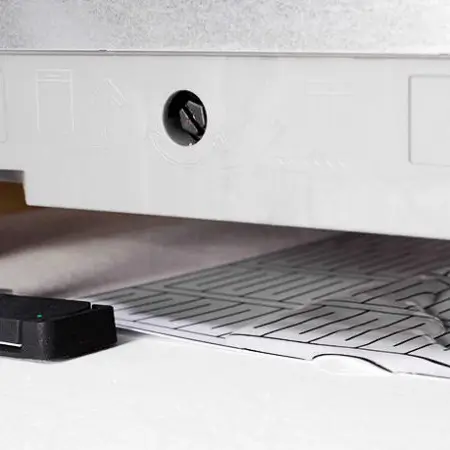
Water damage facts
A shocking number of residential homeowners and commercial landlords either massively underestimate (by thousands of dollars) or flat-out don’t know how much it costs them to run their buildings.
For example, the last time a study was done in the UK, they found 1 in 8 landlords were short a staggering £8,359 (US$10,330) in their annual estimates of what it cost to run their property.
- 14,000 homeowners deal with water leak emergencies every day in the US.
- 37% of homeowners have suffered losses due to water damage.
- Insurance companies pay out US$2.5B each year due to water damage in the US alone.
- The average domestic Escape of Water damage claim is US$6,965.
- 250 gallons of water can leak from a crack in a 1/8" pipe in a single day.
- According to the EPA water leaks in the US waste more than 1T gallons of water each year.
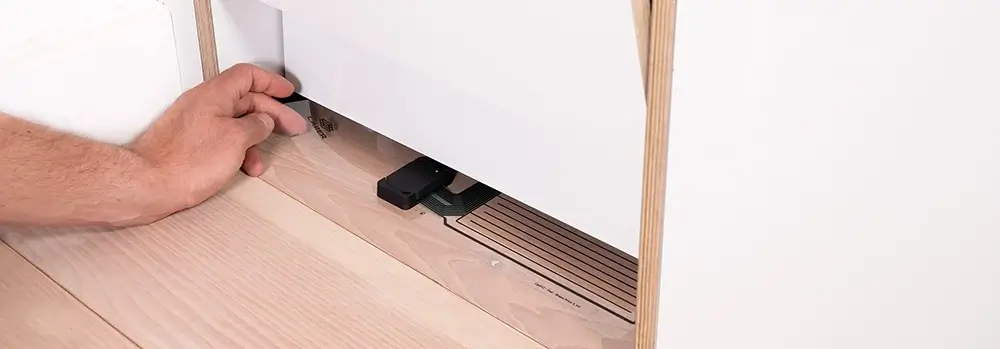
The problem: Sudden, gradual leaks in awkward places
The problem is an Escape of Water (EoW) event from a dishwasher, which we will refer to here as a leak. It is important to note that EoW is different from flooding: it's defined as an event where the water comes from inside the structure according to the ABI
There are six common sources of dishwasher leaks:
- The supply hose.
- The return hose.
- The door (specifically its seals).
- The drain.
- Leaks from not being level dishwasher.
- The water pump.
These can experience small, gradual leaks or sudden, large leaks. And a leak is most likely to occur when the machine is running.
It is also not helful that, while the dishwasher might be damaged, the water leaking out is particularly bad for the things you likely have around and near the machine: tiles, wood, laminates, electrical wiring, drywall, and/or wallpaper.
In almost all of these cases, if these things absorb enough water or become flooded, they are unusable and become unsafe – you need to replace all of it.
How much do dishwasher leaks cost?
The cost of a dishwasher leak, of course, depends on how much water leaks out, how far it has spread, and the materials involved.
Let’s start with what will likely be the most expensive aspects of a dishwasher leak: walls, floors, and ceilings. This is because locating, accessing and drying a space out, plus the materials needed to restore it and the cost of labor to do all this, is the vast majority of the cost of a water leak.
Depending on if it is clean or grey water (the two kinds you’ll have with a dishwasher leak), it’s reasonable to expect this to cost between US$3 - $7 per ft2. The average US kitchen is 100 - 360ft2, so your bill runs anywhere from US$300 - $2,500 to just repair the leak.
But that’s just to clean it up. There are more costs to consider depending on what has been affected:
- Suppose drywall has been seriously water damaged. In that case, it will have to be removed and replaced, or you risk attracting mold. This will add anywhere from a few hundred to a few thousand dollars to the repair bill.
- If any carpet has been affected, this will cost upwards of US$11 per ft2 to repair or replace.
- If hardwood floors are affected, this is US$10 - $15 per ft2 to replace.
The dishwasher itself is quite a bit cheaper to repair. The average cost to repair a dishwasher in the UK is £150, or anywhere from US$150 - $350 in the US. A new pump – a common source of leaks – costs around £105.
When you add it all up, plus the cost of labor (which we won’t get into here), it’s very easy to see how you arrive at an average claim of nearly US$7,000.
It should also be easy to see how much cheaper things are if you can prevent a leak before it gets going. US$200 to replace a pump or valve just beginning to fail is a far cry from one that’s flooded the kitchen and leaked into the basement or the apartment below.
The LAIIER solution: a thin sensor designed for tight spaces
The key to mitigating the high costs and replacing building materials in a dishwasher leak is rapid, early detection. But because many dishwashers are built-in – designed to fit snugly into compact spaces – you are restricted in your options for what you put on or around the dishwasher to warn you of a leak.
We recognized and solved this problem with the design of our Severn sensor – our commercial-grade water leak detector made for small, limited spaces. It applies like tape, which you can wrap around water pumps, valves, hoses, and pipes.
With the Severn sensor, you can connect with them via our Surface to Cloud™ platform so you know immediately if water is coming out where it shouldn’t, even if you’re not in the room or even in the building. And it can be scaled, from one homeowner protecting their kitchen to a building manager looking after a block of a hundred apartments.
